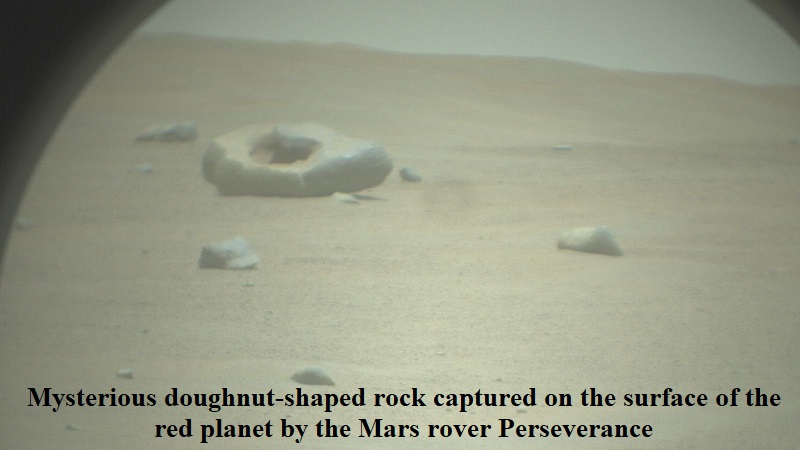
The Mars rover Perseverance has captured an image of a peculiar doughnut-shaped rock on the planet’s surface. Launched in July 2020, the rover is exploring Mars’ Jezero Crater, a 28-mile-wide (45-kilometer-wide) area, in search of signs of ancient microbial life, according to NASA.
The rover is collecting samples of broken rock, soil (regolith), and rock for potential return to Earth in future Mars missions.
The doughnut-shaped object was captured about 100 meters (328 feet) away in the delta region of the Jezero Crater by the SuperCam Remote Micro-Imager, one of the rover’s cameras that helps scientists study the planet’s surface.
The image has sparked curiosity and speculation among netizens, with some entertaining bizarre theories such as it being an “alien toilet” or “some kind of egg.” However, experts have provided a more reasonable explanation, suggesting that it is likely a meteorite that fell from the Martian sky.
The photo of the rock was taken by the Perseverance rover on June 23 and shared on Twitter by the SETI Institute (Search for Extraterrestrial Intelligence). While SETI proposed the possibility of the rock being a “large meteorite alongside smaller pieces,” various Twitter users shared their imaginative ideas.
While SETI’s explanation seems plausible to experts, as meteorites are regularly spotted on Mars by rovers, there are alternative interpretations. Jim Rice, a scientist at Arizona State University, expressed uncertainty but considered it highly unlikely to be a meteorite based on the region’s characteristics, which often feature hollowed-out rocks.
Pascal Lee, a senior planetary scientist at the SETI Institute, also suggested that the rock could be a meteorite, potentially surrounded by smaller rocks or fragments resulting from its breakup upon landing. Lee proposed the possibility that the doughnut shape could have formed due to erosion of weaker materials upon entry into Mars’ atmosphere.
Another theory is that the rock was ejected from another part of Mars due to the impact of a large asteroid, referred to as an ejecta block. Lee recommended diverting the course of the Perseverance rover to investigate further.
As researchers continue to analyze the image and gather more data, they hope to gain a better understanding of the origin and nature of this intriguing doughnut-shaped rock on Mars.

Post Your Comments